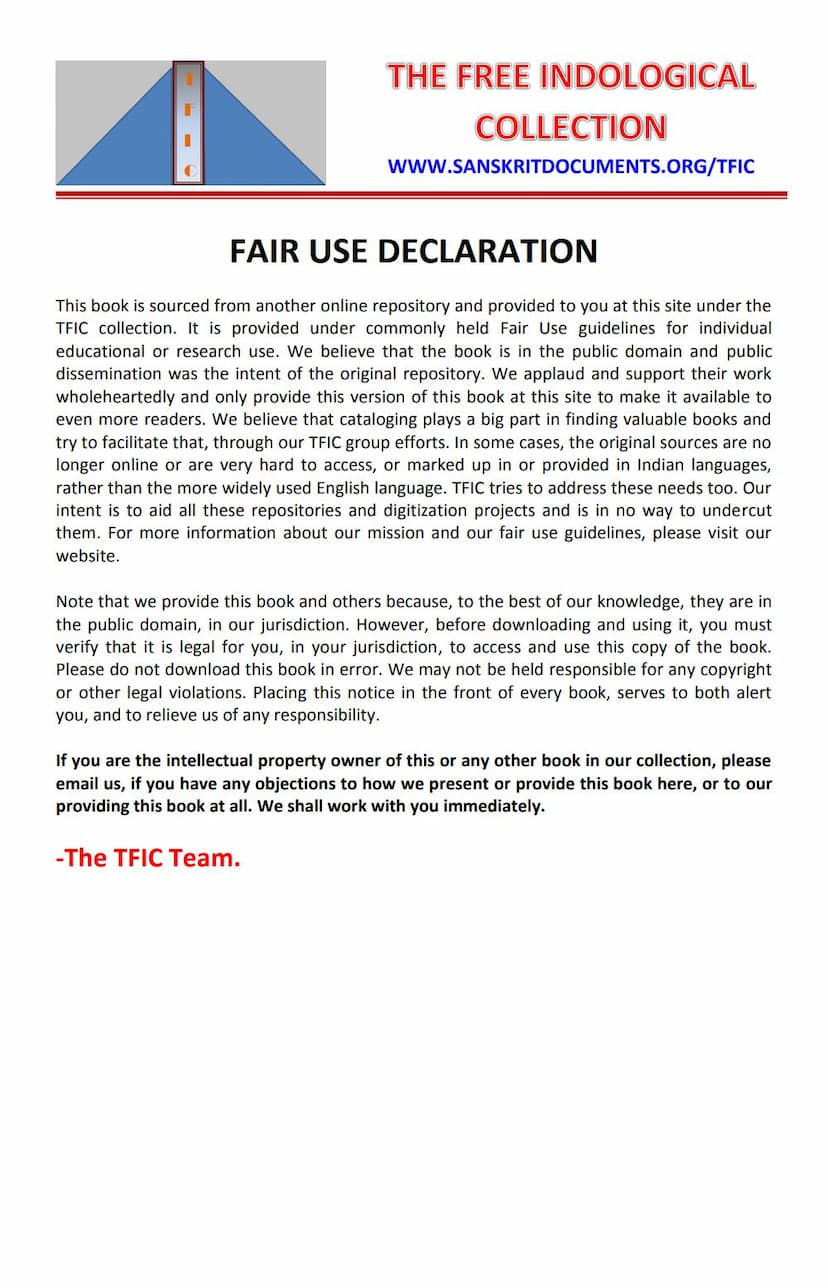Raichandra Jain Shastra Mala Syadwad Manjiri
Added to library: September 2, 2025

Summary
This is a comprehensive summary of the provided Jain text, "Raichandra Jain Shastra Mala Syadwad Manjiri," author Paramshrut Prabhavak Mandal, published by Paramshrut Prabhavak Mandal.
Overall Purpose and Context:
The text is a Hindi translation and commentary on the "Syadvada Manjari," a significant Jain philosophical work. The "Raichandra Jain Shastra Mala" was an initiative established by the renowned Jain scholar Shrimad Rajchandraji to propagate important Jain scriptures to the general public. This particular volume, "Syadvada Manjari," focuses on explaining the Jain doctrine of Syadvada, the theory of conditional predication, which is central to Jain logic and metaphysics. The work aims to refute non-Jain philosophical viewpoints and establish the validity of Syadvada.
Key Figures and Their Contributions:
- Shrimad Rajchandraji: The driving force behind the "Raichandra Jain Shastra Mala," aiming to make rare and profound Jain scriptures accessible with Hindi translations.
- Shrimad Mallishena Suri: The original author of the "Syadvada Manjari" commentary. He wrote the commentary on the "Ayogavyachchheda" and "Anyayogavyachchheda" stanzas composed by Acharya Hemchandra Suri.
- Acharya Hemchandra Suri: A highly influential scholar of the Shvetambara tradition from around 1200 CE, known for his prolific writings. The "Syadvada Manjari" is a commentary on his 32-verse stuti, "Anyayogavyachchheda."
- Pandit Jawahirlalji: The initial translator and editor of the text up to page 108.
- Vanshidhar Gupta: The subsequent translator and editor who completed the work.
Core Philosophical Concepts Explained (Syadvada and its Context):
-
Syadvada (The Doctrine of Conditional Predication): The central theme of the work. It asserts that reality is multifaceted and can be described from multiple perspectives, each conditioned by a specific viewpoint. The "Syat" prefix (meaning "perhaps" or "in a certain way") is crucial, signifying that any statement about reality is true only from a particular angle and not absolutely or universally. This is explained through the concept of Saptabhangi (Sevenfold Predication), which describes reality from seven different conditional standpoints (e.g., it is, it is not, it is and is not, it is ineffable, etc.).
-
Critique of Non-Jain Philosophies: A significant portion of the text is dedicated to refuting the absolutist doctrines of other philosophical schools (like Nyaya, Vaisheshika, Sankhya, Vedanta, Mimamsa, and Buddhism). The commentary systematically analyzes and dismantles their arguments, highlighting the limitations of their one-sided or absolutist views.
-
Rejection of Absolutism: The text argues against theories that claim absolute truth or existence (e.g., eternalism, annihilationism, theistic creationism). It emphasizes that a strict adherence to a single viewpoint leads to contradictions and fails to capture the complexity of reality.
-
Realism and Anekantavada: The text upholds the Jain view of reality as having multiple facets (Anekantavada), where different perspectives (nayas) reveal different aspects of the truth. Syadvada is the linguistic and logical manifestation of this Anekantavada.
-
Nature of Reality: The book delves into the nature of reality, discussing concepts like:
- Dravya (Substance) and Paryaya (Mode/Accident): How a substance has an eternal essence (dravya) while undergoing constant change through modes (paryaya).
- General and Particular (Samanya and Vishesha): Critiquing the Vaisheshika view of these as separate substances and asserting they are interdependent aspects of reality.
- Causality: Debating the nature of cause and effect, particularly in the context of eternalism vs. momentariness.
- The Soul (Jiva) and Consciousness: Discussing the nature of the soul and its attributes, contrasting it with materialistic or monistic views.
- Rejection of a Creator God: The text engages with and refutes the idea of an omnipotent, personal God as the creator of the universe, arguing that such a concept is illogical and contradictory.
-
Epistemology: The text discusses the nature of knowledge and the means of valid knowledge (pramanas), particularly critiquing the Buddhist emphasis on direct perception (pratyaksha) alone and the Mimamsaka reliance on Vedic injunctions. It champions the Jain view that knowledge arises from multiple sources and is subject to context (Syadvada).
Structure and Style:
- The book presents the original Sanskrit text of the "Syadvada Manjari" along with its Hindi translation and detailed commentary.
- The commentary is extensive, explaining the philosophical arguments, refuting opposing views with logical reasoning, and providing scriptural references.
- The author, Vanshidhar Gupta, acknowledges potential shortcomings in his translation and requests leniency from learned readers, highlighting the complexity of the subject matter.
- The preface includes information about the "Raichandra Jain Shastra Mala" and its purpose, listing other published works.
Overall Significance:
"Syadvada Manjiri" is a foundational text for understanding Jain logic and epistemology. This edition, through its Hindi translation and commentary, makes these profound philosophical ideas accessible, allowing readers to grasp the intricate arguments that establish the Jain perspective on reality, knowledge, and ethics. It is a testament to the scholarly efforts to preserve and disseminate Jain heritage.